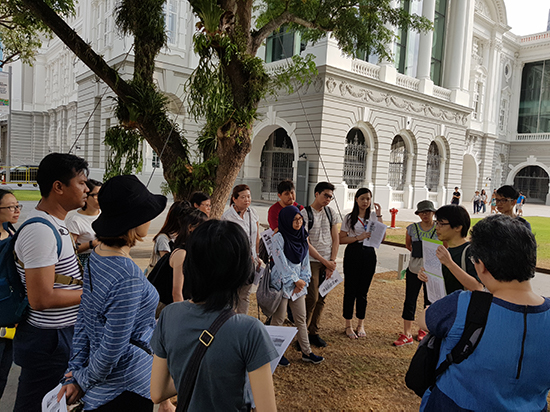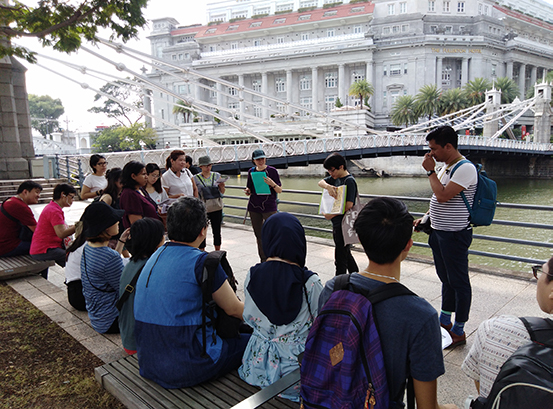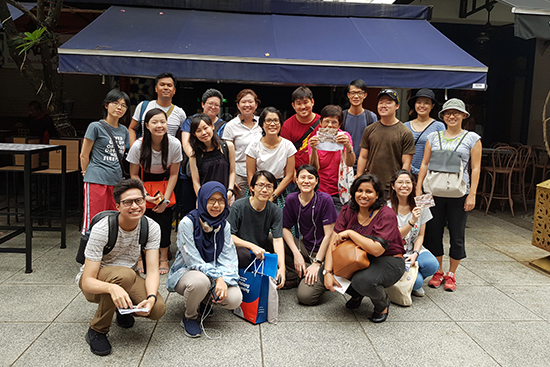You may not know it, but many Singapore locations have appeared in films. The students from the SUSS School of Humanities and Behavioural Sciences (SHBS) Film Studies Minor programme went on an interactive walking tour to discover some of these silver screen sites.
Guided by course developer, filmmaker, and researcher, Toh Hun Ping, the group walked through several decades of Singapore’s history through the movies, with Victoria Theatre as their first stop.

Starting at Victoria Theatre, the group watched a clip from a 1942 combat documentary, "Mare Senki: Shingeki no Kirukui", showing Japanese tanks and soldiers moving triumphantly through the very site they were standing.
The Cavenagh Bridge and the Singapore River were featured in many films, including the 1932 film, Bring ’Em Back Alive, a semi-fictionalised film about an American animal trapper who painted Singapore as a wild kingdom overrun with fanged clawed beasts.

Film history expert Toh Hun Ping shares some of the popular film locations, which include Cavenagh Bridge, the Singapore River, and the Fullerton.
At Boat Quay, the group watched a chase scene shot onboard tongkangs; Ring of Fury (1973) was Singapore’s first martial arts movie, but it was banned for portraying gangsters. At Battery Road, they watched The Singapore Story (1953), a Cantonese anti-communist propaganda film. They also gazed up at the former Asia Insurance Building (now the Ascott Raffles Place). This was once the tallest building in Southeast Asia, and its glamorous facade was used to convey modern urban life, as seen on China Wife (1957) and Che Mamat Parang Tumpol (1960).

The tour ended at 12 Pekin Street, which once housed the office of Lau Poey Kim Motion Picture Co.. It was the production company which made Singapore's first local feature film.
The interactive tour showed the students how each film is a visual record of Singapore, and the choice of locations played a crucial role in conveying meaning.